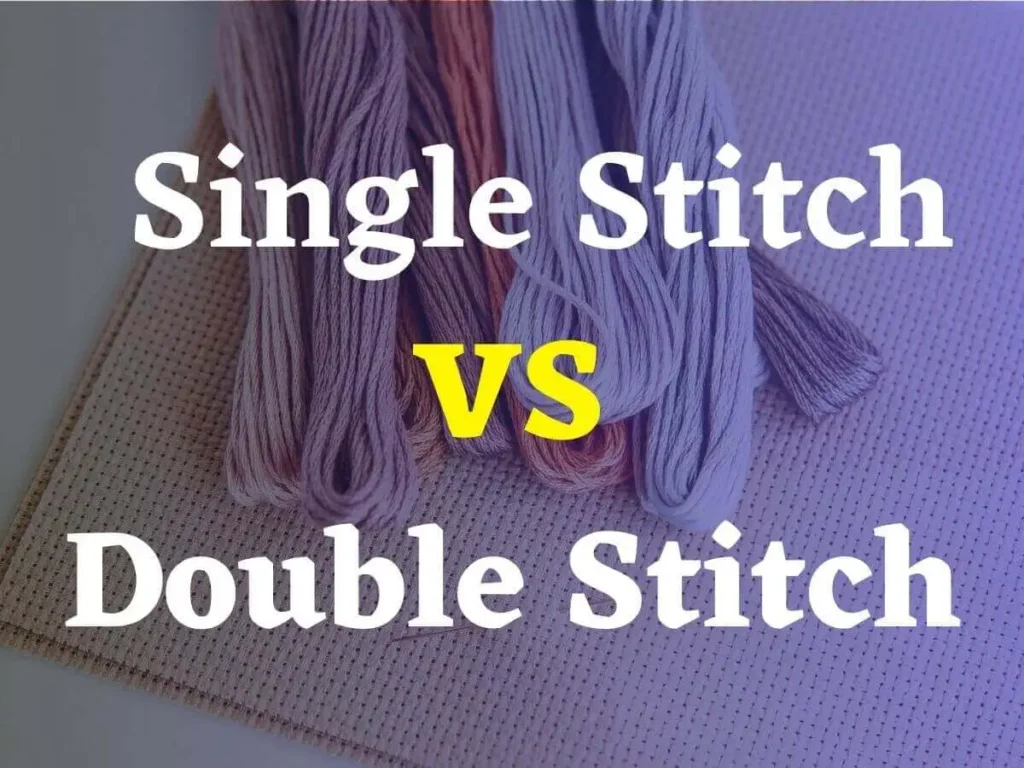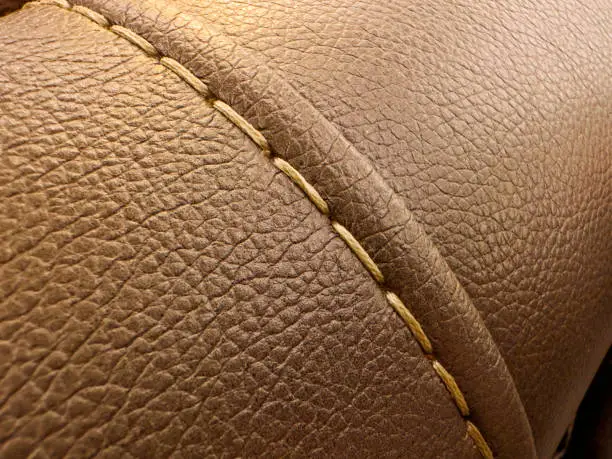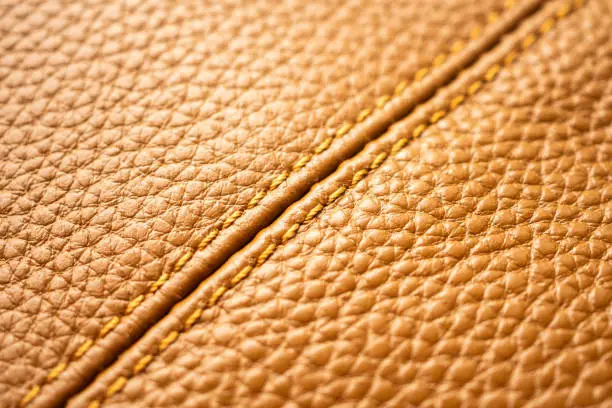
In textiles and clothing, stitching is important for holding everything together. But when people have to choose between single stitch vs double stitch, they often seem confused in deciding which stitching method is best for their needs.
Do you prioritize durability or aesthetic design? This decision will affect the longevity and look of your garment products.
Single Stitch refers to the motor construction in vintage t-shirts specifically it refers to the finishing on the cuff hem and the shoulder of the T-shirt where a single line of stitching secures the fabric edge.
Double stitch involves two parallel rows of stitching running next to each other. This method is commonly used in high-stress areas of garments, like in seams, pockets, and hems, where you need extra strength to prevent tearing or fraying.
Double stitching provides extra strength to garments under stress conditions, while single stitching provides a cleaner, minimal look for lightweight fabrics. Choosing the right method balances durability with the desired aesthetic.
In this article, we will discuss the key differences between single and double stitching that help you decide the ideal stitching method for your clothing projects.
Contents
- What is a Single Stitch?
- What is Double Stitch?
- Comparison: Single Stitch vs Double Stitch
- When to Use Single Stitch vs Double Stitch
- FAQ’s
- What is the main difference between a single stitch and a double stitch?
- Which is more durable: single stitch or double stitch?
- Can I combine single stitch and double stitch in the same project?
- What types of clothing or fabrics are best suited for single stitching?
- What types of clothing or fabrics are best suited for double stitching?
- When should I use a single stitch instead of a double stitch?
What is a Single Stitch?

Single stitch is a simple and old sewing method used in the sewing industry for decades. In a single stitch, only one row of stitches is used to join the two pieces of fabric. You can use these stitches in lightweight garments like t-shirts and casual wear. It goes back and forth on any area of fabric only once.
Similarly, you can use colorful thread to single stitch onto the fabric with the same color. However, the stitches will not be visible but it is suitable for design purposes.
Single Stitches create a clean and minimalist design. It is commonly used for aesthetic purposes in fabrics because it does not demand any durability. But it provides flexibility in the fabric making it useful for lightweight and stretchable materials.
Like double stitching, single stitching is less resistant to wear and tear, which makes it suitable for low-stress areas of garments. We all come across the applications of single stitches in our daily lives.
The T-shirts we wear often come up with single stitches, Similarly, the single stitches are massively used in lighter fabrics.
Benefits of single stitch:
- Faster production.
- Cleaner aesthetic for casual wear.
Drawbacks of single stitch:
- Lower durability.
- More prone to unraveling or wear over time.
What is Double Stitch?

In this method, two parallel rows of stitches are used to join a seam or fabric. It is used in areas that require extra strength, such as jeans, jackets, or heavy-duty clothing. In double stitching, the needle goes back and forth twice on the fabric to give it more strength.
Double stitching gives a polished structured look to the garment, like in workwear or premium clothing. The tight stitch pressure makes it more durable and long-lasting. In addition to durability, double stitching enhances the overall design and aesthetics of the garment.
It is not limited to strength only, through double stitching, you feel premium fashion on materials like tailored jeans or jackets. Some machines, like cover stitch machines, can use multiple needles to create similar double stitches.
This technique is widely used in garments such as denim clothing, tailored garments, sportswear, and other heavy fabrics like canvas and leather.
Benefits of double stitch:
- Greater durability and strength.
- Improved resistance to wear and tear.
Drawbacks of double stitch:
- Slower production process.
- Bulkier appearance in some designs.
Comparison: Single Stitch vs Double Stitch
Durability: For strength and longevity, double stitching performs better as compared to single stitches, because the double row of stitches reinforced seams. Due to its durability, double stitching is often used in heavy-duty clothing like denim or jackets. On the other hand, single stitch is less robust and suitable for low-stress areas or lighter fabrics.
Aesthetic: Both of these stitching techniques differ in the final look of the product. Single stitch makes a minimalist and clean look design like on t-shirts. In contrast, double stitches can easily be seen due to the parallel rows of stitches. It is often seen in premium or durable clothing like jeans or workwear.
Cost and Production Time: A single stitch is faster and more cost-effective as compared to a double stitch because it needs fewer materials and less time, which makes it suitable for bulk production of everyday casual wear. Double stitch is more time-consuming as it requires more thread, which increases both production time and cost. But it adds more strength to garments.
Best Use Cases: Single stitch is used for lightweight fabrics like cotton and casual clothing such as t-shirts, blouses, or other soft garments in terms of comfort and flexibility. Whereas double stitch is ideal for heavier fabrics like denim, canvas, or jackets, where strength is the primary concern.
When to Use Single Stitch vs Double Stitch
For garments that prioritize flexibility, lightness, and comfort then single stitch is the ideal option because it is suitable for lightweight clothing like t-shirts. Similarly, it is also preferable for softer fabrics like cotton, jersey, or knitwear, where a minimalist seam contributes to a cleaner, less bulky appearance.
Double Stitch, on the other hand, should be used when you consider durability and strength.it is best for heavy-duty fabrics like denim, canvas, and other materials used in workwear, jackets, or outdoor gear. Because it is very beneficial for clothes that experience a lot of wear and tear
such as pockets, hems, and high-stress points.
However, the final choice is always yours. You will choose the stitching method according to your needs. Each method has its own benefits along with limitations. Both of these techniques vary in the final look of the product. So, make sure to consider factors like durability, flexibility, cost, and production time.
FAQ’s
What is the main difference between a single stitch and a double stitch?
A single stitch uses one line of stitching, while a double stitch has two lines, which makes it stronger and more durable.
Which is more durable: single stitch or double stitch?
A double stitch is more durable than a single stitch because it uses two rows of stitching.
Can I combine single stitch and double stitch in the same project?
Yes, you can combine single stitch and double stitch in the same project.
What types of clothing or fabrics are best suited for single stitching?
Single stitching is best suited for lightweight fabrics like cotton, silk, or linen and garments that don’t require heavy-duty reinforcement.
What types of clothing or fabrics are best suited for double stitching?
Double stitching suits heavy-duty fabrics like denim, canvas, and leather.
When should I use a single stitch instead of a double stitch?
It would be best if you used a single stitch when working with lightweight fabrics or areas that don’t require much stress, such as seams on t-shirts, delicate blouses, or decorative stitching.
